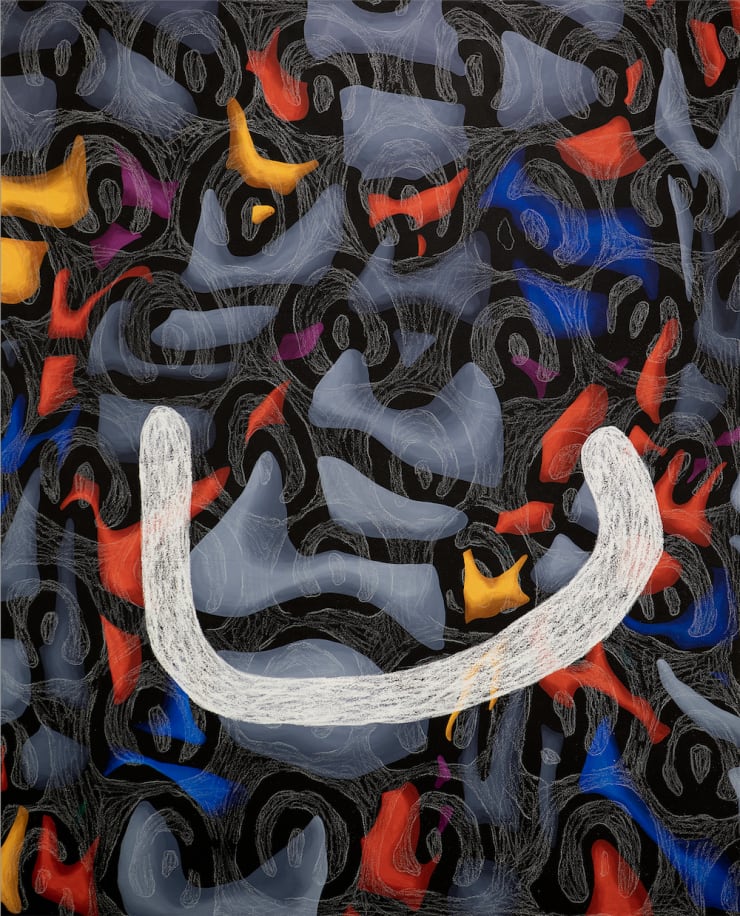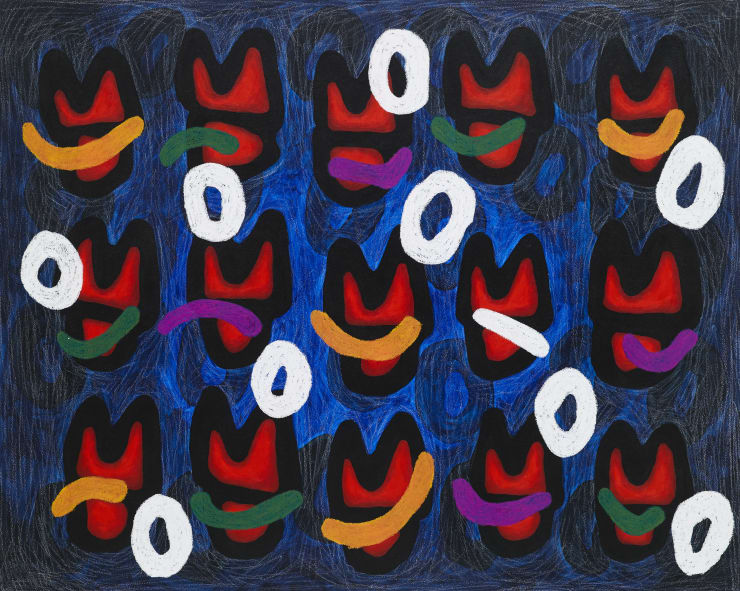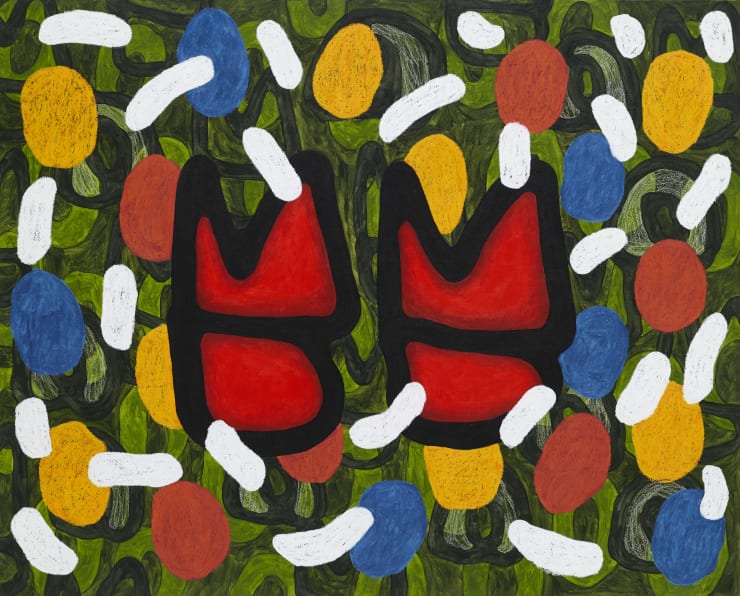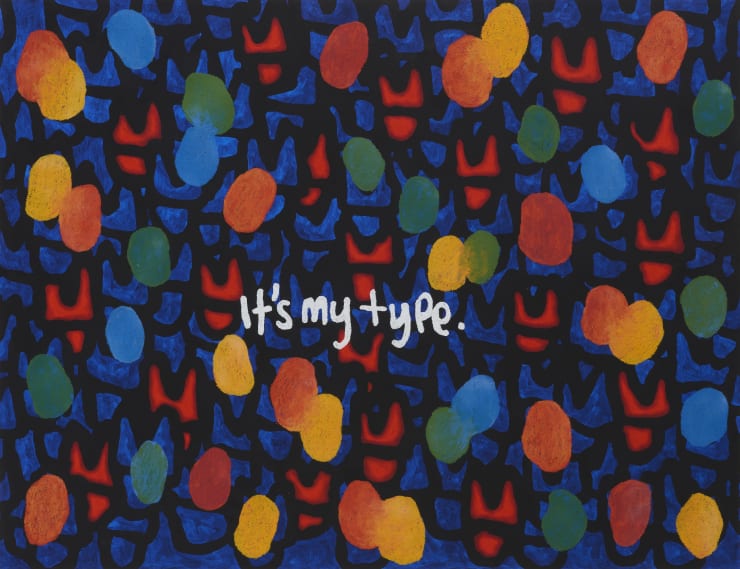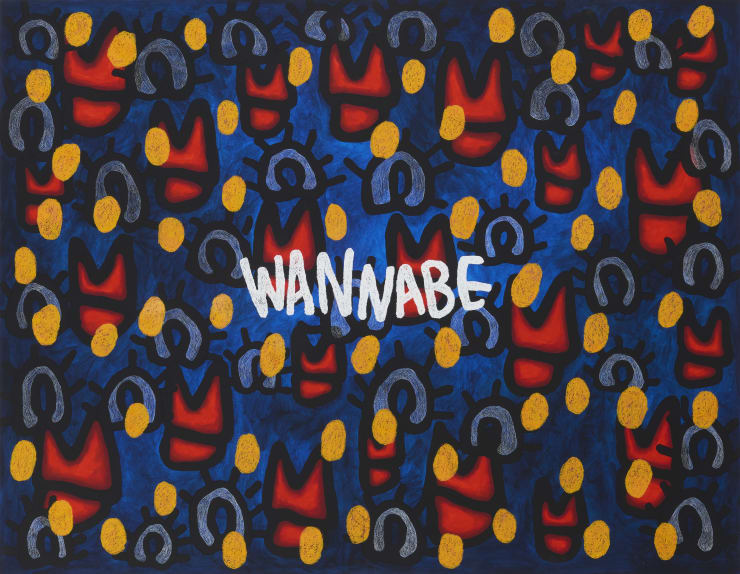JIHI: Present Perfect Progressive
South Korean artist JIHI is a creature of digital culture, intimately familiar with its tropes and abbreviations. She paints clusters and sequences of symbols and pictograms in flat, bright colour. Her compositions are assertively decorative, eschewing any spatial depth. Occasional letterforms spell out banal slogans, echoing the simple concepts of online attention-seeking. Pontone Gallery is pleased to showcase this compelling series of paintings in our London gallery.
We see a network of layers of cryptic, coded information where the meaning is unknown or awaits translation. The work expresses the chaos and excitement of the contempoary digital message-stream, where bursts of quick-fire, compressed information are sprayed enthusiastically into the ether. What are we to decipher? It is easy to interpret alienation in these pieces: they are dense with equivocal and inexplicable signage. However, their very density and surface excitement stimulate enquiry. Formal qualities of shape, colour and dynamic composition seduce the eye.
The artist seems to pose the question: how do we negotiate a world full of multiple alerts and differing messages couched in a babel of many languages and visual signs? Competition for our attention from all sorts of agencies is intense. How does one sift through the chaos for significance, usefulness and relevance? Her paintings, in their playful and faux-naif immediacy, hint at such questions. These pictures are a visual simulacrum of the process of 21st century digital communication - something that is mundane, unremarkable and mostly of little significance, but is, nevertheless, an essential part of contemporary life.
These images owe something to the structures of graffiti, but are also, more importantly, aligned with the forms and usages of the screen. JIHI's effervescent and animated paintings present us with an idea of 'message' and ask us to think about what the content might be.
For SALES & PRESS enquiries
Please email us here or get in touch on WhatsApp.
-
 Bright Smile, 2020Oil on panel162 x 130 cm
Bright Smile, 2020Oil on panel162 x 130 cm
63.8 x 51.2 in -
 What's Your Color?, 2020Oil on panel130 x 162 cm
What's Your Color?, 2020Oil on panel130 x 162 cm
51.2 x 63.8 in -
 JIHI, Sense, 2020
JIHI, Sense, 2020 -
 Page, 2021Oil on panel117 x 91 cm
Page, 2021Oil on panel117 x 91 cm
46.1 x 35.8 in -
 Join, 2020Oil on panel73 x 91 cm
Join, 2020Oil on panel73 x 91 cm
28.7 x 35.8 in -
 White Thought, 2020Oil on panel91 x 73 cm
White Thought, 2020Oil on panel91 x 73 cm
33.6 x 28.5 in -
 Thinking of You, 2019Oil on panel91 x 117 cm
Thinking of You, 2019Oil on panel91 x 117 cm
36 x 46 in -
 It's My Type, 2020Oil on panel91 x 117 cm
It's My Type, 2020Oil on panel91 x 117 cm
36 x 46 in -
 Wannabe, 2019Oil on panel112 x 145.5 cm
Wannabe, 2019Oil on panel112 x 145.5 cm
44.1 x 57.3 in

